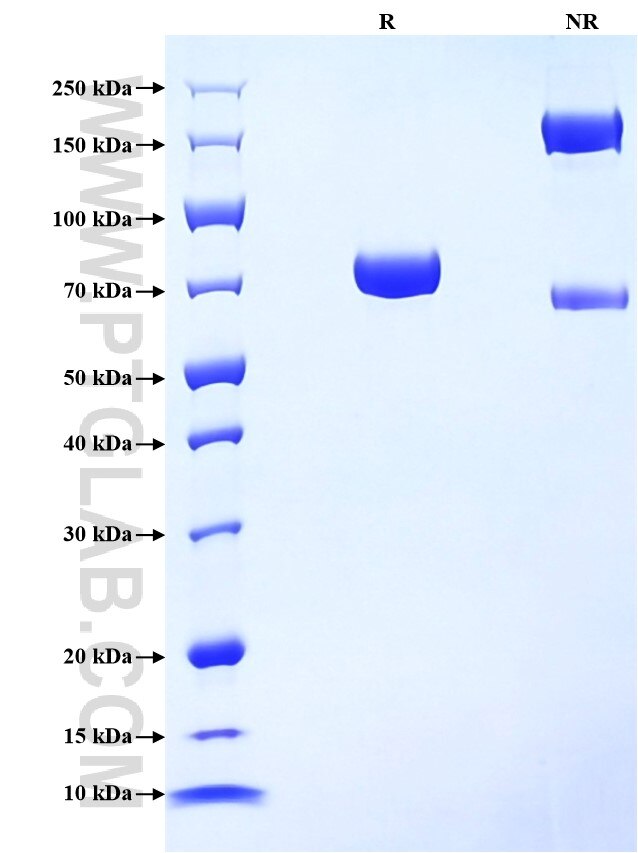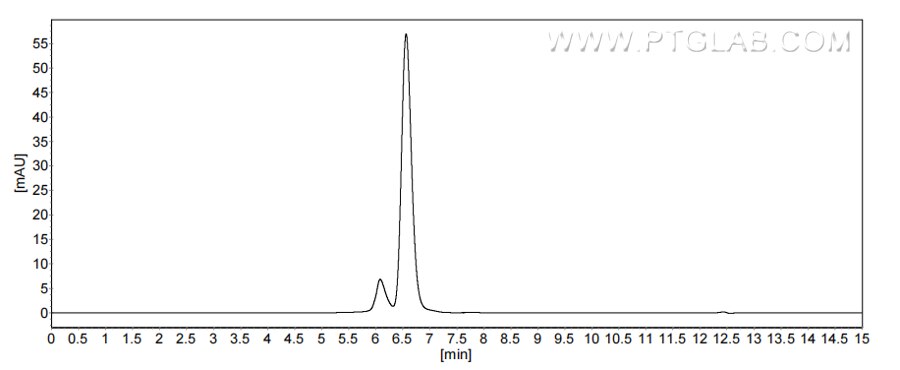Recombinant Rat CD4 protein (rFc Tag) (HPLC verified)
Species
Rat
Purity
>90 %, SDS-PAGE
>90 %, SEC-HPLC
Tag
rFc Tag
Activity
not tested
Cat no : Eg2025
Validation Data Gallery
Product Information
| Purity | >90 %, SDS-PAGE >90 %, SEC-HPLC |
| Endotoxin | <0.1 EU/μg protein, LAL method |
| Activity |
Not tested |
| Expression | HEK293-derived Rat CD4 protein Lys28-Thr394 (Accession# P05540) with a rabbit IgG Fc tag at the C-terminus. |
| GeneID | 24932 |
| Accession | P05540 |
| PredictedSize | 67.4 kDa |
| SDS-PAGE | 70-85 kDa, reducing (R) conditions |
| Formulation | Lyophilized from 0.22 μm filtered solution in PBS, pH 7.4. Normally 5% trehalose and 5% mannitol are added as protectants before lyophilization. |
| Reconstitution | Briefly centrifuge the tube before opening. Reconstitute at 0.1-0.5 mg/mL in sterile water. |
| Storage Conditions |
It is recommended that the protein be aliquoted for optimal storage. Avoid repeated freeze-thaw cycles.
|
| Shipping | The product is shipped at ambient temperature. Upon receipt, store it immediately at the recommended temperature. |
Background
CD4 is a 55-kDa transmembrane glycoprotein expressed on T helper cells, majority of thymocytes, monocytes, macrophages, and dendritic cells. CD4 is an accessory protein for MHC class-II antigen/T-cell receptor interaction. It plays an important role in T helper cell development and activation. CD4 serves as a receptor for the human immunodeficiency virus (HIV). CD4 triggering by gp120, a natural ligand of CD4, potentiates CD44-mediated adhesion to hyaluronic acid. CD4 is present in human and rat macrophages, but absent in mice.
References:
1. K Bowers, et al. (1997) Int J Biochem Cell Biol. 29(6):871-5. 2. Gina Graziani-Bowering, et al. (2002) Exp Cell Res. 279(1):141-52. 3. J M Riberdy, et al. (1998) Proc Natl Acad Sci U S A. 95(8):4493-8. 4. U Dianzani, et al. (1999) Int Immunol. 11(7):1085-92. 5. P R Crocker, et al. (1987) J Exp Med. 166(2):613-8.

